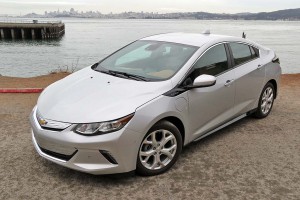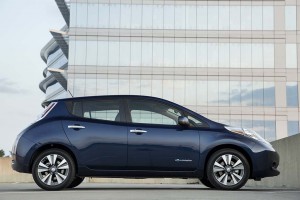Federal regulators have delayed a proposed rule that would require new battery-based vehicles to emit warning sounds to reduce the likelihood of hitting a pedestrian or bicycle rider, especially those who are sight-impaired.
The rules, which were supposed to be finalized this month, would create a common standard for vehicles operating at low speeds in electric mode. Currently, a handful of models do produce warning sounds, but the National Highway Traffic Safety Administration wants to come up with a standard alert that can be easily recognized.
Pedestrian fatalities rose 3.1% last year compared to 2013, according to federal statistics, though there are no clear data to indicate whether the growing number of hybrids, plug-ins and battery-electric vehicles played a role in that increase.
But NHTA estimates a hybrid vehicle is 19% more likely to be involved in a pedestrian crash than a conventionally powered vehicle. It estimates the new rule could ultimately result in 2,800 fewer injuries to pedestrians and bicyclists annually. Currently, about 125,000 are injured in crashes each year.
(After long decline, U.S. highway traffic deaths rising again. Click Here for the latest.)
The problem is that battery-based vehicles are extremely quiet when operating in electric mode, a particularly serious issue for the sight-impaired who rely, at least in part, on sound to help them while walking.
Several manufacturers have acknowledged the problem, and some have proposed solutions. Nissan already uses a beeping sound – much like the noise emitted by many large trucks – when its Leaf battery-electric vehicle shifts into reverse.
A small Japanese start-up, GLM Company, recently signed an agreement with synthesizer company Roland Corp. to provide what it described as a “neo-futuristic sound generation system” for the electric sports car GLM is developing. A motorist would be able to choose from several options, including the roar of a conventional, gas-powered sports car, or something more sci-fi-like.
But NHTSA is looking to come up with something more standardized, and it will set specific speeds at which the vehicle will have to produce warning sounds. Currently, the plan is to require that when a vehicle is operating in electric mode at 18 miles an hour or less.
Automakers have challenged the proposals details, though appear to be willing to go along with the basic concept. Regulators estimate it will cost about $23 million to implement during the first year. The most expensive element would be an external speaker rugged enough to stand up to various weather conditions.
(Thanksgiving week wrecks likely to spike up to 34%, says new study. Click Here to see why.)
NHTSA now has pushed back until March a final decision on the rules, a filing on its website noting, “additional coordination is necessary,” according to a report by the Reuters news service.
Congress originally authorized NHTSA to act in 2010, and the agency first planned to have the rules in place by 2014. If it finally completes the process next spring it would require manufacturers to start adding the speaker system to their vehicles 18 months later, at the traditional start of the 2018 model-year.
If the rule was in place today, it would impact less than 5% of the vehicles sold during the 2015 model-year. But sales of battery-based vehicles capable of running in electric-only mode are expected to go substantially over the next decade as the industry responds to increasingly stringent emissions and mileage standards.
(Toyota recalls 1.6 mil vehicles for Takata airbag problems — for a second time. Click Here for more.)



Why rush this when people can be injured or killed while NHTSA decides what to do?